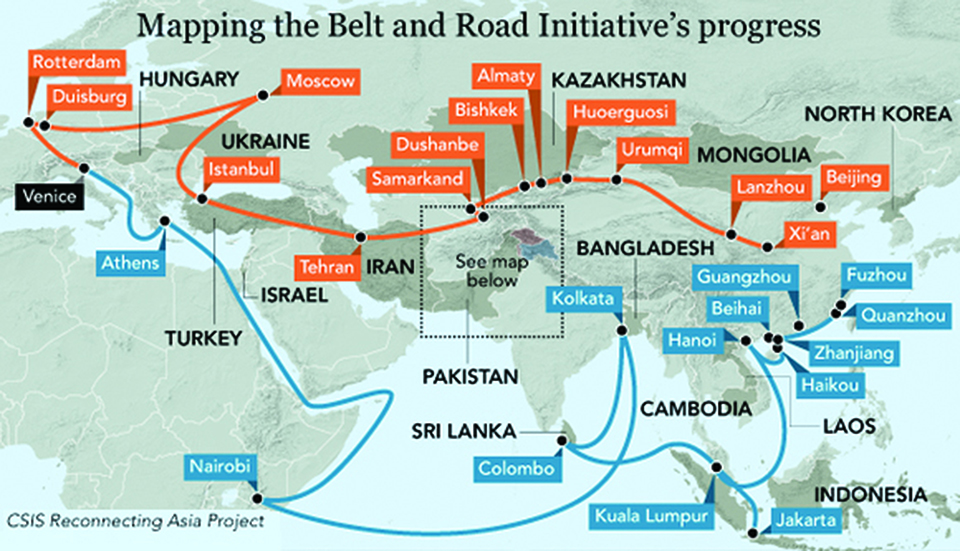Virendra Pandit
New Delhi: The surest signs of a recession in the post-Covid Chinese economy are now visible: Beijing has either stopped or curtailed investments in several projects under the Belt and Road Initiative (BRI).
The media reported that China’s new investment in Russia fell to zero and dropped in Pakistan by 56 percent during the first half of 2022.
The Green Finance and Development Center at Fudan University in Shanghai has pointed to growing headwinds facing Chinese President Xi Jinping’s signature foreign policy venture that he once dubbed “the project of the century,” according to the Radio Free Europe/Radio Liberty (RFE/RL), a US-funded news outlet based in Prague, Czechia.
Russia and Pakistan are among the top beneficiaries of the Chinese development spending through the BRI.
Moscow signed deals worth about USD 2 billion with Beijing in 2021 alone. Islamabad hosts a USD 62 billion collection of infrastructure and energy projects known as the China-Pakistan Economic Corridor (CPEC), linking the Gwadar Port in Baluchistan with Xinjiang Province.
The Fudan University report highlighted the changing nature of the BRI as it adapted to a combination of a strained global economy, China’s shifting position in the world, and many countries who inked deals and took out loans through the initiative now grappling with a growing debt crisis, the radio reported.
The BRI spending, envisaged to be USD 1.3 trillion by 2027, has been declining for years as Beijing has become more risk averse.
The report showed a total of USD 28.4 billion in Chinese investment across 147 BRI projects over the first half of 2022, down from USD 29.6 billion over the same period last year.
The BRI’s rapid expansion since 2013 has helped China become the world’s largest source of development credit.
Sometimes referred to as the New Silk Road, China’s BRI (previously known as the One Belt, One Road, or OBOR), launched with much fanfare in 2013, is one of the most ambitious infrastructure projects ever conceived globally. Its vast collection of development and investment initiatives would have stretched across several countries from East Asia to Europe, significantly expanding China’s economic and political influence.
However, the Covid-19 pandemic and its ramifications since 2020, including progressive financial meltdowns of Sri Lanka, Pakistan, and other countries and the Russia-Ukraine war, came as a bolt from the blue for China, whose economy also decelerated for the first time in the last three decades.
Besides these headwinds, the US and its G-7 allies unveiled a Build Back Better World (B3W) initiative in June 2021. It is designed to provide an alternative to China’s BRI for the infrastructure development of low and middle-income countries. This year, the G-7 envisaged a collection of nearly USD 600 billion for this project in the next couple of years.

